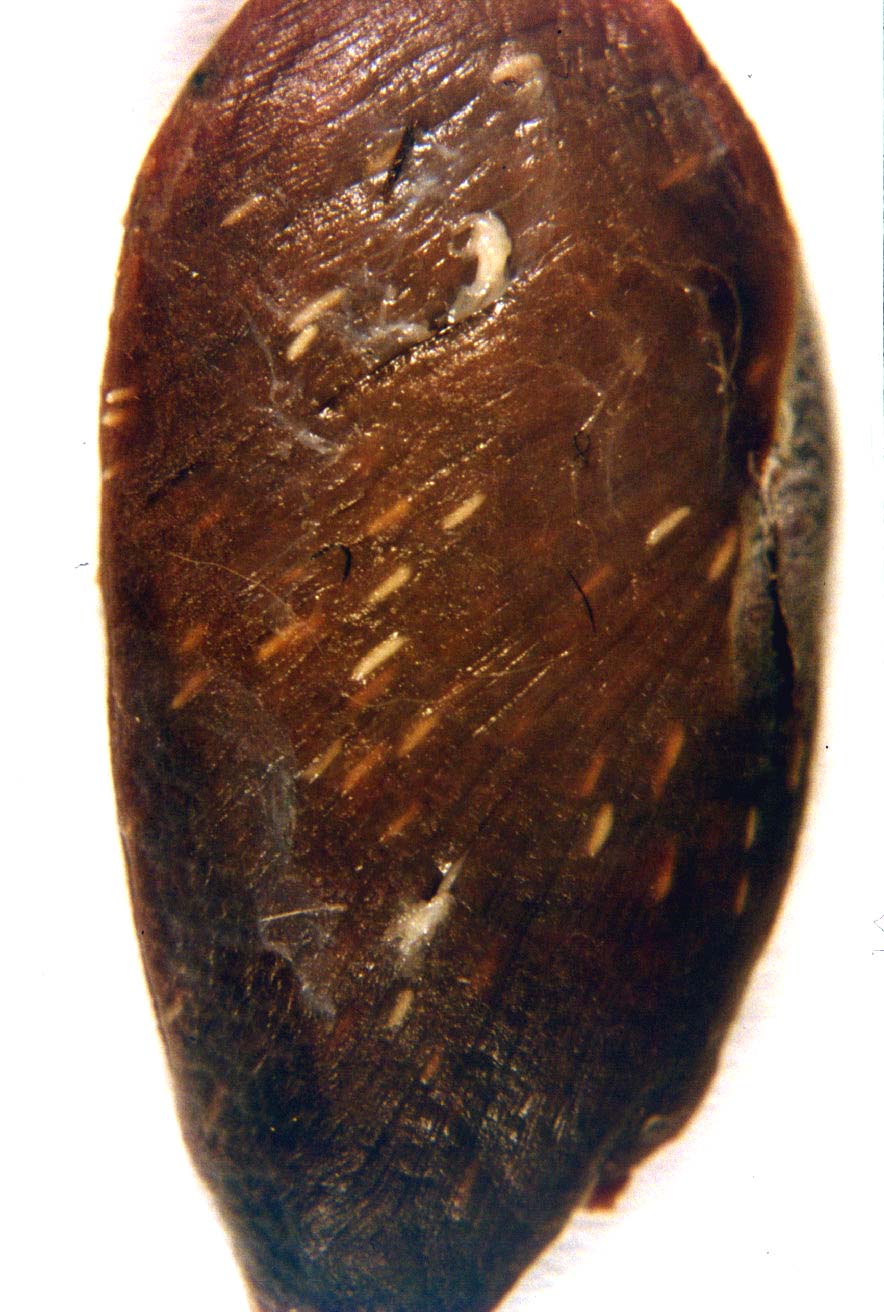

Biology 625
ANIMAL PARASITOLOGY
Supplemental visual material

|
Macroscopic cysts of a Sarcocystis sp. in the breast
muscle of a Green-winged teal collected in Brazos County, Texas
Members of the genus Sarcocystis possess a heteroxenous life-cycle. Asexual multiplication occurs in the intermediate host resulting in the formation of resistant tissue cysts containing thousands of bradyzoites. Some species produce microscopic tissue cysts whereas other species, such as the one on the left, produces rice grain-like macroscopic cysts. Metrocytes are present within these cysts, which are globular, irregularly shaped cells that undergo endodyogeny and eventually give rise to infective bradyzoites. Once the tissue cyst is ingested by the appropriate definitive host, bradyzoites are liberated, penetrate intestinal cells, and undergo gamogony. Merogony does not occur within the intestinal tract of the definitive host. The resulting oocysts sporulate endogenously and are thin-walled, often rupturing and releasing free sporocysts in the feces. Although not all members are pathogenic, some species are and heavy infections in the intermediate host can lead to anemia, premature parturition, abortion, weight loss, diarrhea, anorexia, and death. The traditional name for macroscopic cysts of Sarcocystis spp. in anseriform birds has been Sarcocystis "rileyi". However, this actually represents a complex of multiple Sarcocystis spp. Definitive hosts for these various species include Didelphis virginiana (opossum) and Mephitis mephitis (striped skunk), and it is likely that future studies will reveal a number of additional medium-sized mammals as hosts. |
|---|
Original; photograph courtesy Dr. R. D. McKown

Home | Search | What's
New | Help | Comments
Kansas State University | Biology Division